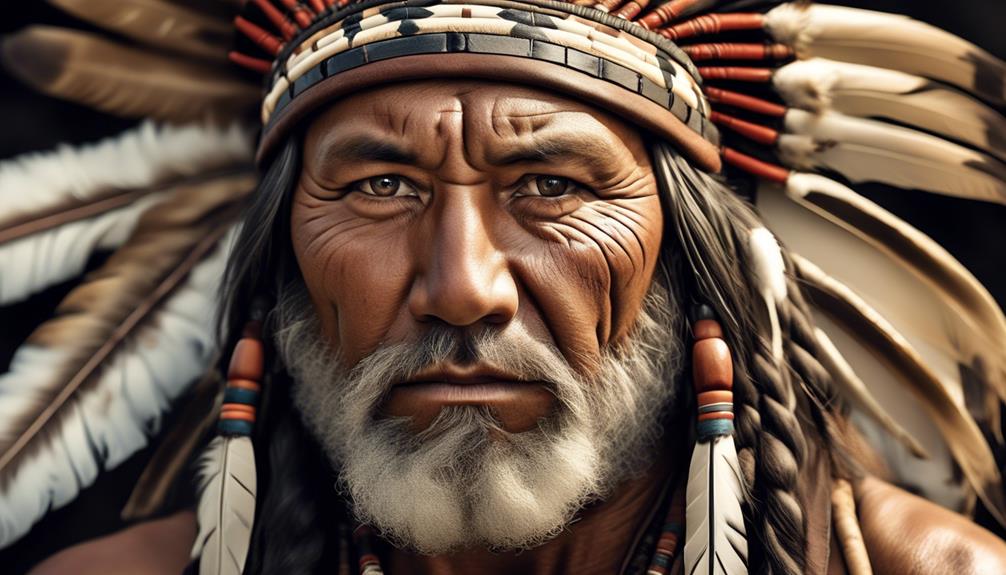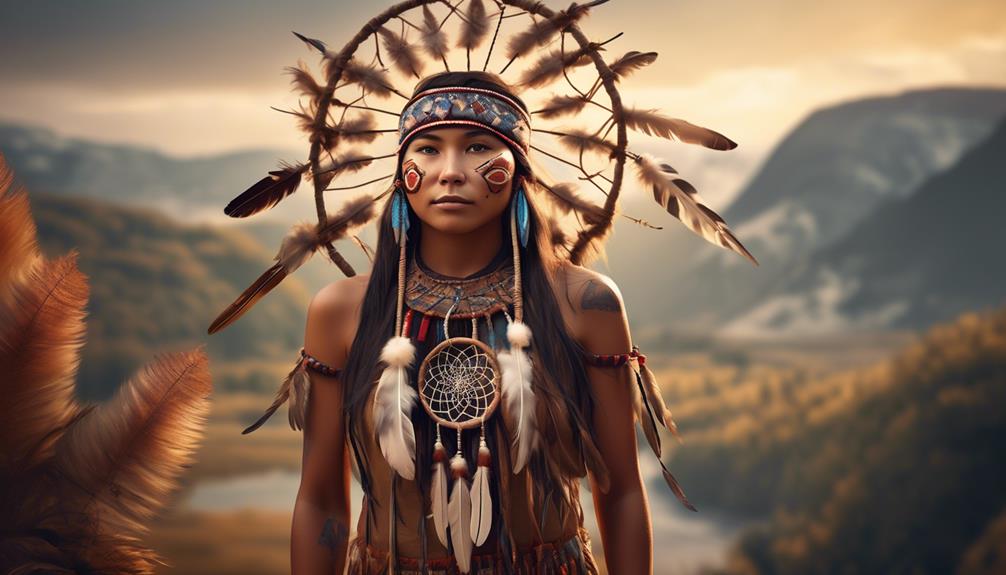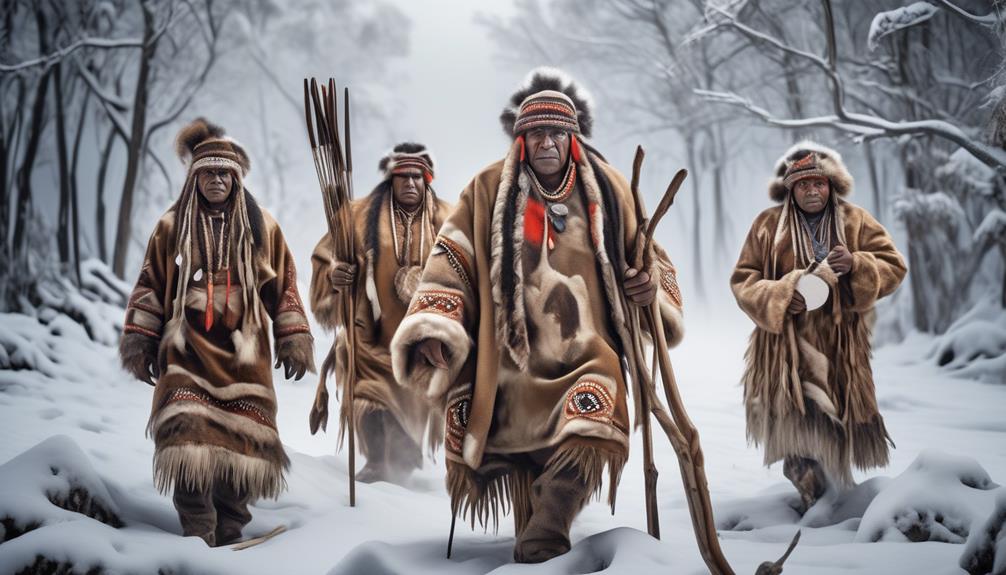We all know that one Native American friend who proudly rocks an impressive beard, proving the misconception that Native Americans can’t grow facial hair wrong.
But is this just an exception, or do Native Americans as a group have a unique relationship with facial hair?
The answer to this question may surprise you, as we explore the historical, genetic, and cultural aspects of Native American beard growth.
Join us as we unravel the complexities surrounding this topic and uncover the truths behind Native American facial hair.
Key Takeaways
- Native American facial hair varied across tribes and regions, with different grooming customs and standards introduced through colonial influence.
- Beard patterns in Native American populations can be influenced by ancestral genetics, as well as environmental factors such as diet and lifestyle.
- Facial hair holds spiritual and social significance in Native American communities, representing masculinity, wisdom, and connection to nature.
- There are common myths and misconceptions about Native American beards, including the false belief that all Native American men can't grow beards and that they historically didn't cultivate facial hair, when in fact facial hair holds cultural significance in many tribes.
Historical Perspectives on Native American Facial Hair
Historically, depictions of Native American facial hair have varied widely across different tribes and regions, reflecting diverse cultural and grooming practices. Traditional practices play a significant role in understanding the historical perspectives on Native American facial hair.
For many Native American tribes, facial hair was a symbol of masculinity, wisdom, and strength. However, it's essential to acknowledge the colonial influence on these traditional practices. The arrival of European settlers brought new grooming customs and standards that influenced the perceptions of facial hair within Native American communities.
Additionally, genetic diversity among Native American tribes also played a crucial role in the variation of facial hair patterns. Some tribes exhibited a propensity for full, lush beards, while others had less facial hair due to genetic differences.
The cultural significance of facial hair in Native American communities goes beyond mere aesthetics; it often held spiritual and social significance, with specific grooming rituals and practices associated with facial hair.
Understanding the historical perspectives on Native American facial hair requires a nuanced appreciation of traditional practices, colonial influence, genetic diversity, and cultural significance.
Genetics and Beard Growth in Native American Populations
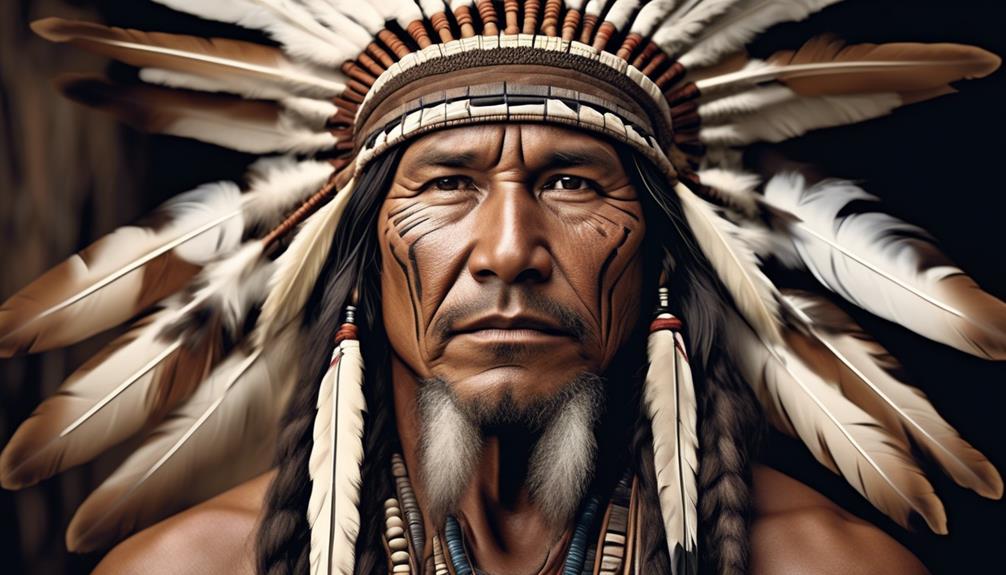
Genetic research has shed light on the varying patterns of beard growth among different Native American populations, revealing a complex interplay of genetic factors influencing facial hair. The genetic variations influencing beard patterns in Native American populations are a subject of growing interest and research.
Here are three key points to consider:
- Ethnic Diversity: Native American populations are incredibly diverse, comprising numerous distinct ethnic groups, each with its own genetic makeup. This diversity contributes to the wide range of beard patterns observed among Native American individuals.
- Influence of Ancestral Genetics: The beard patterns of Native American individuals can be influenced by the genetic traits inherited from their ancestors. The interplay of these ancestral genetic variations can result in a spectrum of beard growth patterns within Native American communities.
- Environmental Factors: While genetic variations play a significant role in beard growth patterns, environmental factors such as diet, lifestyle, and exposure to certain hormones can also impact the development of facial hair in Native American populations.
Understanding the genetic and environmental factors that influence beard growth patterns in Native American populations is crucial for gaining insight into the complexities of human genetics and evolution.
Cultural Traditions and Symbolism of Facial Hair
The cultural significance of facial hair among Native American communities reflects a rich tapestry of traditions and symbolism deeply rooted in their heritage and customs.
Facial hair symbolism varies across different Native American tribes and can hold diverse meanings. In some tribes, facial hair is seen as a symbol of masculinity and wisdom, with the growth of a beard signifying the transition from adolescence to adulthood. It can also be a representation of connection to nature, as facial hair growth is often associated with the natural world and the passage of time. Additionally, the grooming and styling of facial hair may hold specific cultural significance, such as the intricate designs and braids seen in some Native American traditions, representing individual and tribal identity.
Moreover, genetic factors may play a role in the ability of Native American individuals to grow facial hair, but the cultural significance often transcends mere biological traits. It's important to recognize that the traditions and symbolism surrounding facial hair in Native American communities are deeply ingrained in their cultural heritage and are significant aspects of their identity.
Understanding and respecting these cultural nuances is essential in appreciating the diversity and richness of Native American traditions.
Common Myths and Misconceptions About Native American Beards
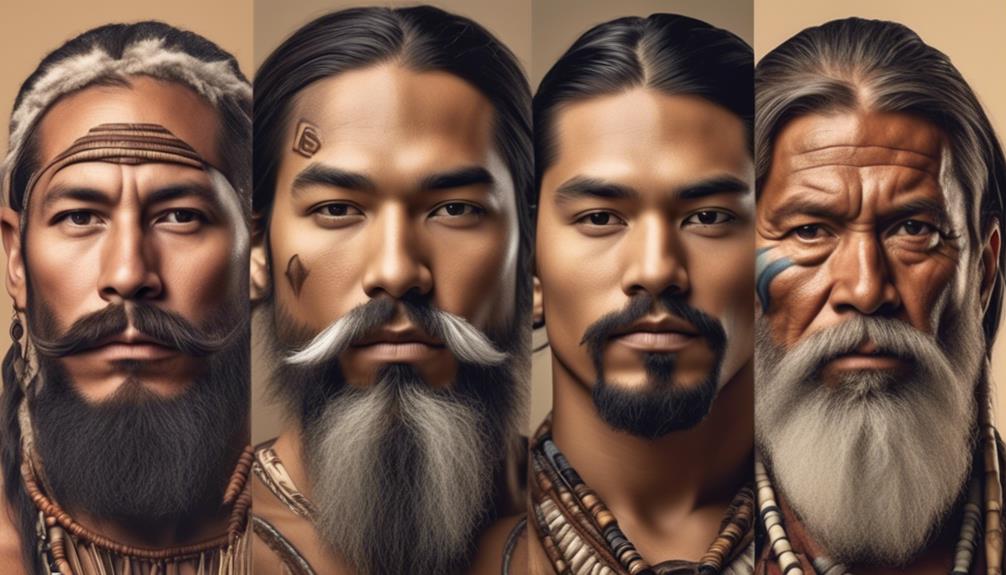
Common myths and misconceptions about Native American beards often stem from a lack of understanding of the diverse cultural traditions and symbolism associated with facial hair within different Native American tribes. It's essential to debunk these myths and understand the societal perceptions surrounding Native American beards.
- Myth Debunking: One common misconception is that all Native American men can't grow beards. This is false, as genetics determine an individual's ability to grow facial hair, and Native American men exhibit the same range of facial hair growth as men from other ethnic backgrounds.
- Societal Perceptions: Another myth is that Native American men historically didn't cultivate facial hair. However, historical records and cultural artifacts demonstrate that many Native American tribes had traditions and rituals associated with facial hair, including beard grooming and styling.
- Cultural Significance: Contrary to the misconception that Native American beards are insignificant, facial hair holds cultural significance in many tribes. It can symbolize maturity, wisdom, and status within the community, challenging the myth that facial hair lacks importance in Native American culture.
Understanding the cultural diversity and significance of facial hair within Native American tribes helps debunk these myths and misconceptions, fostering a more accurate and respectful understanding of Native American traditions.
Contemporary Perspectives and Practices Regarding Beard Growth
In contemporary Native American culture, the significance and practice of beard growth continue to reflect the diverse traditions and values of different tribes. While some Native American men have embraced modern grooming practices, including beard grooming as a part of their personal care routine, others have chosen to uphold traditional perspectives on beard growth.
In modern fashion, there's been a resurgence of interest in facial hair, including beards, and this trend has been embraced by some Native American men as a way to express their individual style and cultural pride.
For some, growing a beard is a way of connecting with their heritage and expressing their masculinity. However, it's essential to recognize that not all Native American men can or choose to grow beards due to genetic factors or personal preferences.
Additionally, the significance of beard growth may vary among different tribes, with some placing greater importance on facial hair as a symbol of wisdom and maturity, while others may not view it as a significant cultural practice.
Frequently Asked Questions
What Are Some Traditional Grooming Practices for Native American Men With Facial Hair?
Traditional techniques for Native American men with facial hair include using natural oils and herbs for beard care. These grooming practices hold cultural significance, reflecting connection to nature and heritage. Maintaining facial hair is often a symbol of maturity and wisdom in many Native American traditions.
The grooming process embraces a sense of pride and respect. These traditional methods provide insight into the rich history and values of Native American communities.
Are There Any Specific Cultural Taboos or Beliefs Surrounding Beard Growth in Certain Native American Tribes?
Cultural beliefs and grooming practices vary among Native American tribes, influencing attitudes towards beard growth. Some tribes view beards as a symbol of wisdom and masculinity, while others have traditional taboos surrounding beard growth.
Historical figures and contemporary trends also shape perceptions. It's important to approach this topic with respect and understanding of the diverse cultural beliefs and practices within Native American communities when discussing beard growth rates and the significance of beards in different tribes.
Do Native American Men Experience Different Rates of Beard Growth Compared to Men of Other Ethnicities?
Beard growth varies among ethnic groups due to genetic factors. Studies suggest Native American men may experience different rates of beard growth compared to other ethnicities.
Grooming practices, cultural taboos, and historical figures influence attitudes toward facial hair. Understanding these nuances fosters respect for diverse perspectives on masculinity.
Are There Any Historical Figures or Leaders in Native American History Known for Their Impressive Facial Hair?
Native American leaders have been known for their impressive facial hair, reflecting grooming practices and cultural taboos.
While historical depictions often emphasize facial hair, contemporary opinions vary on beard growth rates and ethnic differences.
In popular culture, Native American figures are often portrayed with prominent beards, adding to the mystique.
It's essential to approach the topic with respect for diverse cultural traditions and understand that perceptions of facial hair can differ across communities.
How Do Contemporary Native American Men Feel About the Increasing Trend of Beard Grooming and Styling in Popular Culture?
Contemporary perspectives on beard grooming trends among Native American men vary. Some embrace it as a form of self-expression and cultural pride, while others may view it through the lens of cultural beliefs and taboo restrictions.
The increasing trend of beard grooming and styling in popular culture has sparked conversations within our communities about the intersection of tradition and modern influences.
It's a complex and evolving aspect of our cultural identity.
Conclusion
In conclusion, while there may be historical, genetic, and cultural factors that influence the growth of facial hair in Native American populations, the irony lies in the fact that the question of whether Native Americans can grow beards is ultimately irrelevant.
Just like any other group of individuals, some Native Americans can grow beards, and some cannot. It's important to move beyond stereotypes and recognize the diversity and individuality within Native American communities.
Mary is a passionate writer who brings creativity and a fresh perspective to our team. Her words have the power to captivate and inspire, making her an essential contributor to our content. Mary’s commitment to storytelling and dedication to promoting Indigenous culture ensures that her work touches the hearts of our readers. We’re fortunate to have her as part of our team.
